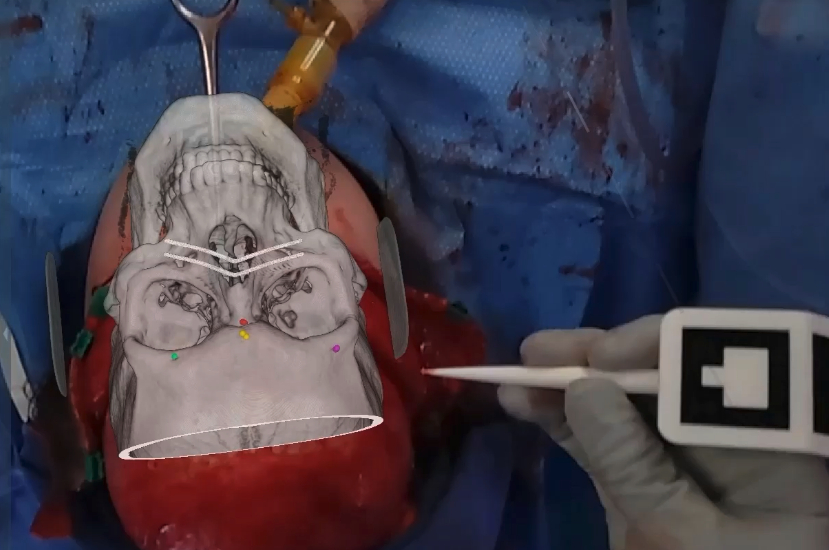An Initial Use of Mixed Reality within Frontal Sinus Setback
Nicolás M. Kass*1, Lucille Cheng1, Zhazira Irgebay2, Elizabeth A. Moroni2, Lucas Dvoracek2, Jesse Goldstein2
1Department of Plastic Surgery, University of Pittsburgh School of Medicine, Pittsburgh, PA; 2Department of Plastic Surgery, University of Pittsburgh Medical Center, Pittsburgh, PA
Of the procedures that make up facial feminization surgery, frontal sinus setback has a particularly high impact on gender perception. Mixed reality (MR) is a nascent technology that holds significant promise in plastic and reconstructive surgery. MR allows a user to view and manipulate three-dimensional patient images while superimposing them on the patient. This method allows for direct visualization of deep structures in real time, without making a single incision. To the best of our knowledge, this is the first usage and evaluation of this technology inside of a plastic surgery operating room in the United States.
CT imaging was uploaded to the MR system and a three-dimensional hologram was projected onto a see-through visor. The CT was registered to the patient using a point-to-point framework that relied on bony fiducials identified intra-operatively using a localizing wand, namely the supraorbital notches, nasion, and glabella, matched to virtual counterparts. Time measures and discrepancy from our standard-of-care 3D cutting guide were measured along with survey of the operating surgeon.
Qualitative descriptions demonstrated that 3-dimensional visualization of deep structures improved surgeon confidence and operative decision making. The process of matching the hologram to the patient and cropping to see intended structures took three minutes and twelve seconds. Tracing of the frontal sinuses based on the hologram took 61 seconds. Maximum discrepancy from the 3D cutting guide was 5mm and minimum was exactly the same. In addition, the workflow that was established was both efficient and intuitive.
Mixed reality was shown to be accurate in superimposing a patient's CT on top of their actual skull during surgery, allowing for a tracing of the frontal sinuses. This rapidly developing technology demonstrates promise for being a viable intraoperative image guidance technology and may provide a faster and more effective method of anatomical identification than the current standard of care.
Back to 2023 Abstracts


